This month there is an exhibit in the adult collection about money and managing finances. I’ve decided to focus my children’s programming around money, and money fun, while the exhibit is on display. It’ll be a good opportunity to educate kids about being responsible with their money in a fun way, while the adults have the opportunity to learn about the same thing, through a more mature, if less entertaining method. I’m planning on teaching several simple money “magic” tricks, since it always seems like money disappears, practically magically, no matter how hard you try to keep up with it.
One week in November, we’ll make “Hillbilly Wallets.” They are easy to make, but not so easy to figure out. If you search online, another name for it is “Magic Wallet.”
Here is a video tutorial that I found to explain how to make one. It’s really easy. I use a couple of pieces of corrugated cardboard glued together, ribbon, tape, glue, and some kind of paper to make the cover. I like to glue plain white paper to the cover, and let the kids decorate their wallets any way they like. They really get excited watching the ribbons grab their dollar bills. For the program, I print out play money for them to use. Here’s a demonstration of how the wallet works.
A similar trick is the magic book. Here’s a video demonstration of that trick. It uses a coin instead of a bill, but other than that, it is the same trick. It is small enough, though, to be carried around in a pocket.
One week, we’ll create penny banks from milk cartons. The opening in a cardboard half gallon milk carton is just the right size for a quarter to fit through, which means the other American coins will fit, as well. I glue white drawing paper around the cleaned out carton, and let the participants use markers, crayons, pieces of construction paper, play money, and glue-sticks to decorate their banks. Then I challenge them to fill them up before they try to get the coins back out again.
We’ll also create optical illusion tops, using pennies. There are lots of ways to create optical illusions on spinning objects. We’ll use a blank top, with a penny in the center to make it spin, and participants will have several printed designs to color, as well as some blank circles to decorate any way they want. The tops will be made from heavy corrugated cardboard that I’ll cut into circles with the center cut out for the coin. Librarians who have enough old cd’s available, though, can use those with a marble hot-glued into the center hole. Participants will decorate printer paper circles marked to match the tops, cut them out, then set the paper on top of the cardboard, and spin their tops. Here are some Optical Illusion Tops designs that I found online at Heidi Songs blog, but a Google search or browsing books on optical illusions (Dewey 152.148) will offer many more designs, as well.

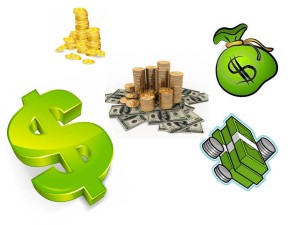
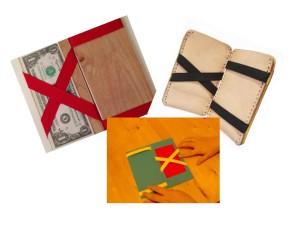
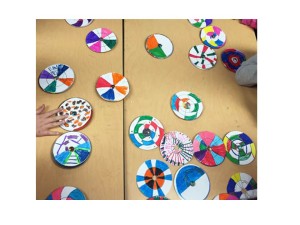
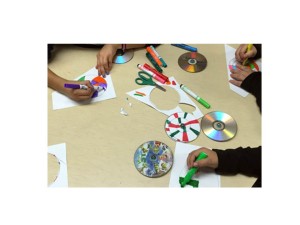
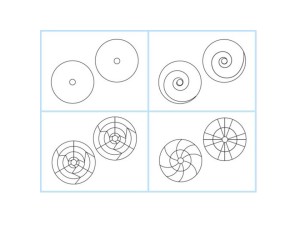



Leave A Comment